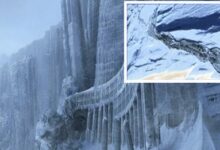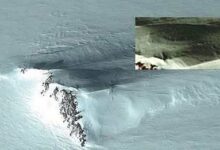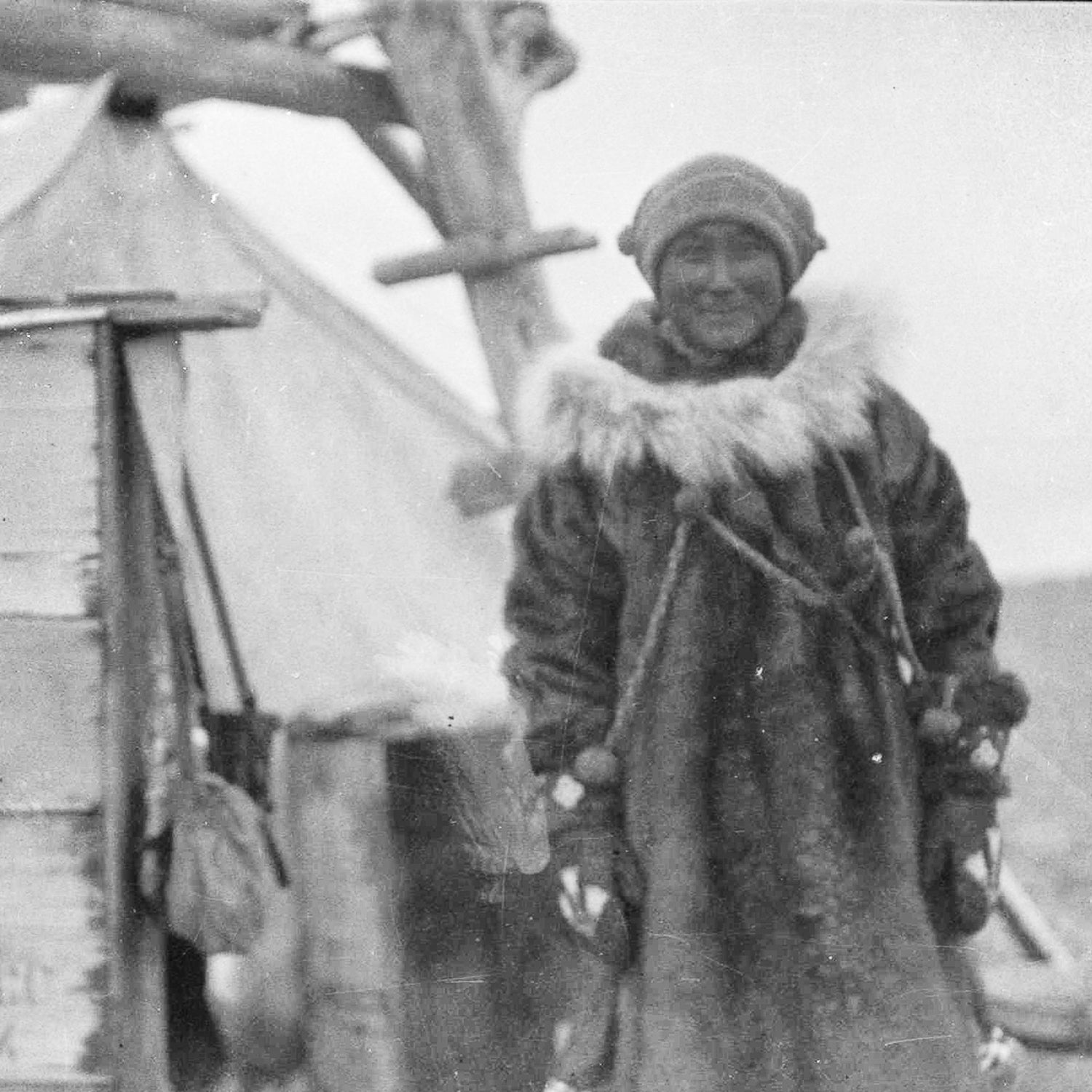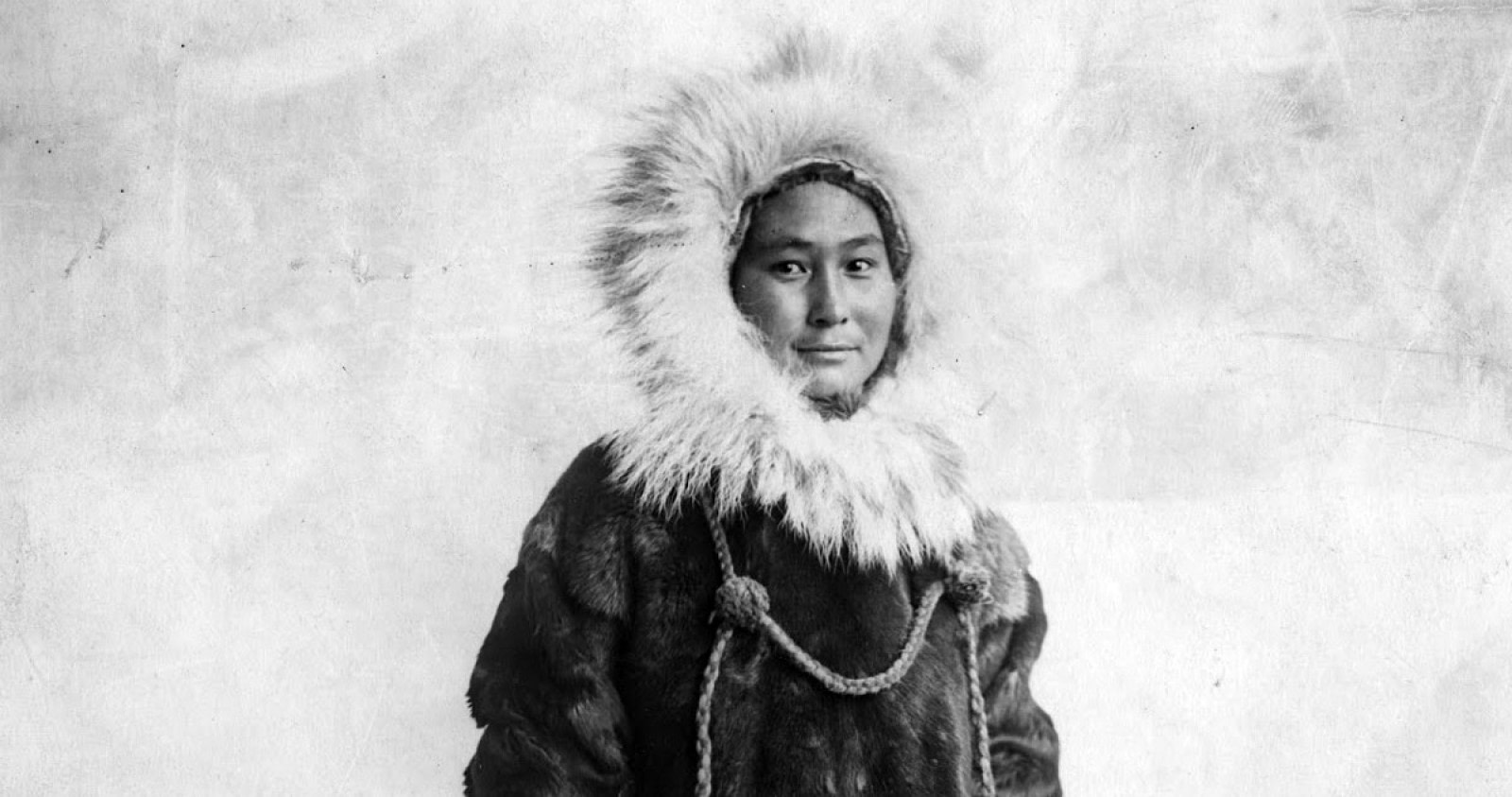She Was Left In The Arctic To Survive With Polar Bears, What They Found 2 Years Later Will Shock You
In 1921, a quiet and unassuming woman named Ada Blackjack set out on a perilous journey that would cement her place in history as one of the most remarkable survival stories ever told. Hired as a seamstress for an expedition to Wrangle Island in the Arctic, Ada’s life would change forever when she became the sole survivor of the ill-fated mission. Her story is one of extraordinary resilience, strength, and courage in the face of unimaginable hardship.
Ada Blackjack was born in 1898 to an Inupiat family in Alaska, where she grew up learning traditional skills that would later save her life. Despite her heritage, Ada had led a relatively sheltered life, and by the time she joined the Wrangle Island expedition, she was not considered a wilderness expert. She was a mother first, having lost her husband and trying to support her sick son. With a heart full of hope, Ada accepted the position as a seamstress on the expedition, needing the money to care for her boy.
The Wrangle Island expedition, led by Vilhjalmur Stefansson and initiated by four young men, was not adequately prepared for the harsh realities of the Arctic. The expedition’s goal was to claim the island for Canada, a plan conceived with little consideration for the dangers they would face. Ada, the only woman in the group, was hired to sew clothes and cook for the men. She had no formal experience with such expeditions and no reason to anticipate the trials ahead.
When the team landed on Wrangle Island, it was immediately clear that survival would not be easy. The cold, biting winds of the Arctic, combined with the rapidly dwindling supplies, created a sense of urgency. As the months passed, it became evident that the group’s preparations were insufficient. The land was far less hospitable than they had imagined. The isolation, the cold, and the scarcity of food began to take their toll on the group’s morale and health.
The situation grew dire when three of the men decided to leave the island in search of help, hoping to cross the frozen sea to Siberia. They left Ada and one other expedition member, Lorne Knight, behind, with a promise to return. As time passed, it became clear that the men were not coming back.
Soon after the departure of the others, Lorne Knight became gravely ill, suffering from scurvy. For months, Ada cared for Knight, providing him with food, water, and shelter, despite her own worsening condition. She nursed him as best she could, displaying a deep sense of compassion, but ultimately, Knight passed away, leaving Ada completely alone on the island.
Now isolated, Ada’s survival depended entirely on her ability to harness the skills she had learned as a child. She set traps, hunted for food, and used her sewing skills to repair clothes and equipment. Though she was not trained for this kind of survival, Ada demonstrated an extraordinary ability to adapt. Her Inuit heritage, which had instilled in her the knowledge of how to live off the land, became her lifeline.
During this time, Ada also managed to fend off polar bears, who regularly threatened her camp. She built a barrier of makeshift traps and kept her rifle close, ready to protect herself from the wild animals. In the face of extreme cold, isolation, and danger, Ada endured, displaying an unshakable will to live.
Ada Blackjack survived alone on Wrangle Island for nearly two years. Her days were filled with the struggle for survival: hunting, fishing, and keeping herself warm in the frigid Arctic climate. Though she had been abandoned by her companions, Ada never gave up hope. Her love for her son, Bennett, kept her going. Every day, she fought not just to survive but to reunite with him.
Throughout her time on the island, Ada kept meticulous records of her days, documenting the weather, her food sources, and her attempts to signal for help. This resilience in maintaining her routine helped her stay mentally strong during the long months of isolation.
In August 1923, a rescue team finally arrived on Wrangle Island, shocked to find Ada alive. She had survived the extreme conditions of the Arctic alone, a feat that astonished even the most experienced explorers. Ada was taken back to Alaska, where she was reunited with her son. Her incredible journey was largely downplayed at the time, as the media focused more on the failure of the expedition than on her survival.
Ada Blackjack never sought fame or recognition for her incredible feat. Despite being hailed as a hero by those who knew her story, Ada was a humble woman who preferred to focus on her family. She returned to a quiet life, caring for her son, and lived out her days away from the spotlight.
Yet, Ada’s journey remains one of the most inspiring tales of survival in exploration history. Her resilience, determination, and love for her son carried her through nearly two years of isolation in one of the harshest environments on Earth. She survived not because she was an explorer or adventurer, but because of her resourcefulness, mental strength, and deep-rooted cultural knowledge.
While Ada’s story is one of survival, it also raises important questions about the ethics of exploration. She was hired as a seamstress, not a survivalist, yet was left alone to fend for herself in a hostile environment after the expedition’s leaders failed. Her tale sheds light on the often-overlooked contributions of indigenous people, especially women, in the age of exploration. Ada’s survival was not just a triumph of the human spirit but a testament to the strength and knowledge of her Inuit heritage, which gave her the tools to survive where others perished.
Today, Ada Blackjack’s story is being reclaimed as an example of indigenous resilience and quiet heroism. Her journey challenges traditional narratives of exploration, which often overlook the critical role of indigenous knowledge and the contributions of women. Ada’s legacy is not just one of survival but of cultural strength, maternal love, and the enduring power of the human will.







